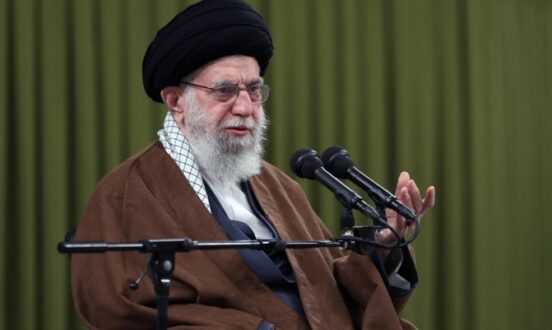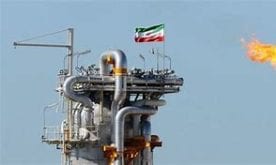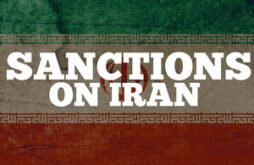iranintl – Almost one year since his death, the family of Ali Seyedi still mourns their young hero who died at the hands of Iranian regime’s security forces.
The clashes between several young female protesters and the plainclothes security agents in the city of Parand near Tehran were what prompted Ali to rush into their defense. Alas, little he knew that his not-to-be forgotten act of bravery would cost his own life.
Ali Seyedi had just celebrated his 25th birthday when Mahsa Amini, the young Kurdish woman who has emerged as a new symbol of Iranian women’s resistance against the theocratic dictatorship, passed away in hospital on September 16, 2022, due to the wounds inflicted upon her in police custody.
Mahsa’s death shook Ali to the core like hundreds of thousands of others all over Iran. He promptly joined the wave of protests and commenced posting anti-government content on his Instagram account.
However, this was not adequate to quell the flames of anger in Ali’s soul and quench the thirst for change simmering in his heart. Despite, the imminent danger he was well-acquainted with, Ali joined the ranks of thousands of other protesters who poured into the streets across Iran on October 26, 2022, which marked the 40th day after Mahsa’s death.
“Ali saved the girls, but the plainclothes forces shot him in the torso at close range, then dragged his wounded and bleeding body to the side of the street. A few hours later, when they saw that he was in critical condition, they abandoned him and left the scene,” Zhila Khakpour, Ali’s mother recounted.
It took the Seyedis hours to finally find a lead about Ali’s whereabout. The police contacted the family around 5 AM the next day, only to inform them of Ali’s devastating death. Consequently, the backbreaking pressure from the authorities on the family for denying the fact that Ali was shot by the government forces and during a bloody day protest commenced. From menacing threats about not returning Ali’s corpse to his family, to depriving his parents from holding a public funeral for their son and arresting his brother and several of his friends at the cemetery where his tomb is situated, the regime knew no boundary. To this day, the Seyedi family continues to face ongoing pressure to keep them silent.
This has not been an isolated incident confined to the Seyedis. Over the past year, it has been the path that many grieving families have walked. These families lost their wives, husbands, daughters, sons, brothers, and sisters to the brutal crackdown on the widespread anti-regime protests in Iran last year. This trajectory has been especially common among those seeking justice for their loved ones who unjustly perished.
Until now, no one in the upper echelons of the autocratic regime has even remotely acknowledged any responsibility for the ruthless suppression of the protesters.
Reverting to its previous pattern of escalating suppression when confronted with demands for accountability and justice as the first anniversary of Mahsa Amini’s death approaches, marking the initiation of what many Iranians now call the “Woman, Life, Freedom” movement, the regime has once more turned to its well-worn strategy of issuing threats and spreading fear among the grieving families.
Mahmood Amiry-Moghaddam, a Norwegian-Iranian human rights advocate and the director of the NGO “Iran Human Rights,” has observed a significant increase in the persecution and prosecution of the victims’ families. This surge can be directly attributed to the growing influence of the “Movement for Justice Seeking” for the victims of the regime in Iran, led by these families.
Furthermore, resorting to harassment of the protest victims’ families or anyone who can raise their voice, is closely related to the existential threat that the Iranian regime has faced following the outbreak of protests at Mahsa’s death, according to Amiry-Moghaddam. He added that the regime’s tactics of intimidation and suppression are attempts to extend its longevity. The human rights advocate, however, deemed that fearmongering and suppression “might temporarily save a dictatorship, but sooner or later they would lose their control over the people again as such regimes lack stability.”
When evaluating the strategies employed by regimes that constantly fear facing the anger of their citizens, one of the most common approaches is to take preemptive measures to silence all dissenting voices. Consequently, in recent weeks, numerous outspoken members of grieving families who have either actively engaged on various social media platforms or maintained contact with other families, channeling their mourning into various forms of protest, have been summoned or arrested by regime forces.
The Iranian authorities have not disclosed the exact number of those arrested, nor have they provided reasons for their detention. In certain cases, they have even arrested lawyers who were representing these individuals, seemingly attempting to hinder the sharing of information regarding the families’ status.
Moein Khazaeli, a journalist and human rights researcher based in Sweden, has suggested that the relentless crackdown by the Iranian regime’s intelligence apparatus is motivated by their realization that “the justice-seeking families of the victims have become the face of the Woman, Life, Freedom movement in Iran.” Consequently, the regime has prioritized suppressing these families by intensifying pressure on them, aiming to erase the identity of the protest movement and silence its voice, at least temporarily.
Sources familiar with the situation have informed Iran International that the authorities’ main goal is to compel the arrested individuals into a vow of silence. This entails refraining from organizing anniversary ceremonies in memory of their loved ones and avoiding posting any calls for protests on social media.
The same fate befell some outspoken families of the protesters killed in what is commonly referred to as the “Bloody November” back in 2019 when mass protest rallies across Iran over the rising fuel price, soon turned into a call for toppling of the regime and received a violent reaction from Iran’s clerical establishment.
Reuters news agency reported in December 2019 that about 1,500 people were killed during less than two weeks of unrest including at least 17 teenagers and about 400 women.
Highlighting a similarity between the events of Bloody November and the Woman, Life, Freedom protests in Iran, Amiry-Mohghaddam pointed out that the efforts of the families of the 2019 crackdown victims have played a crucial role in reshaping the face of the Movement for Justice Seeking in Iran and attracting more international attention and recognition. As a result, the Iranian regime has sought to escalate its endeavors to restrain any actions by the families in ht elatest round of protests who are actively seeking accountability and justice for their deceased loved ones.
As the first anniversary of the Woman, Life, Freedom protest movement approached, the bold call for justice once again rose stronger and more determined than ever before. It stands as a precursor to the eventual downfall of a tyrannical regime that has consistently disregarded the needs and aspirations of its people. The departed have arisen to confront their oppressors and carry on their quest for justice.
“My son was a hero; he saved his fellow countrywomen. However, I always regret that he left without saying goodbye. We have not yet revealed the extent of the pressure that they (the Iranian regime) have exerted upon us; what I have recounted is merely part of the harassment we suffered,” said Ali’s sorrowful mother. She can only hold onto hope for a memorial ceremony on the first anniversary of her son’s passing to ensure his name remains a part of the history of the freedom-seeking movement in Iran.
(This is an article by Maryam Moqaddam and Masoud Kazemi, journalists at Iran International)
 Shabtabnews In this dark night, I have lost my way – Arise from a corner, oh you the star of guidance.
Shabtabnews In this dark night, I have lost my way – Arise from a corner, oh you the star of guidance.



